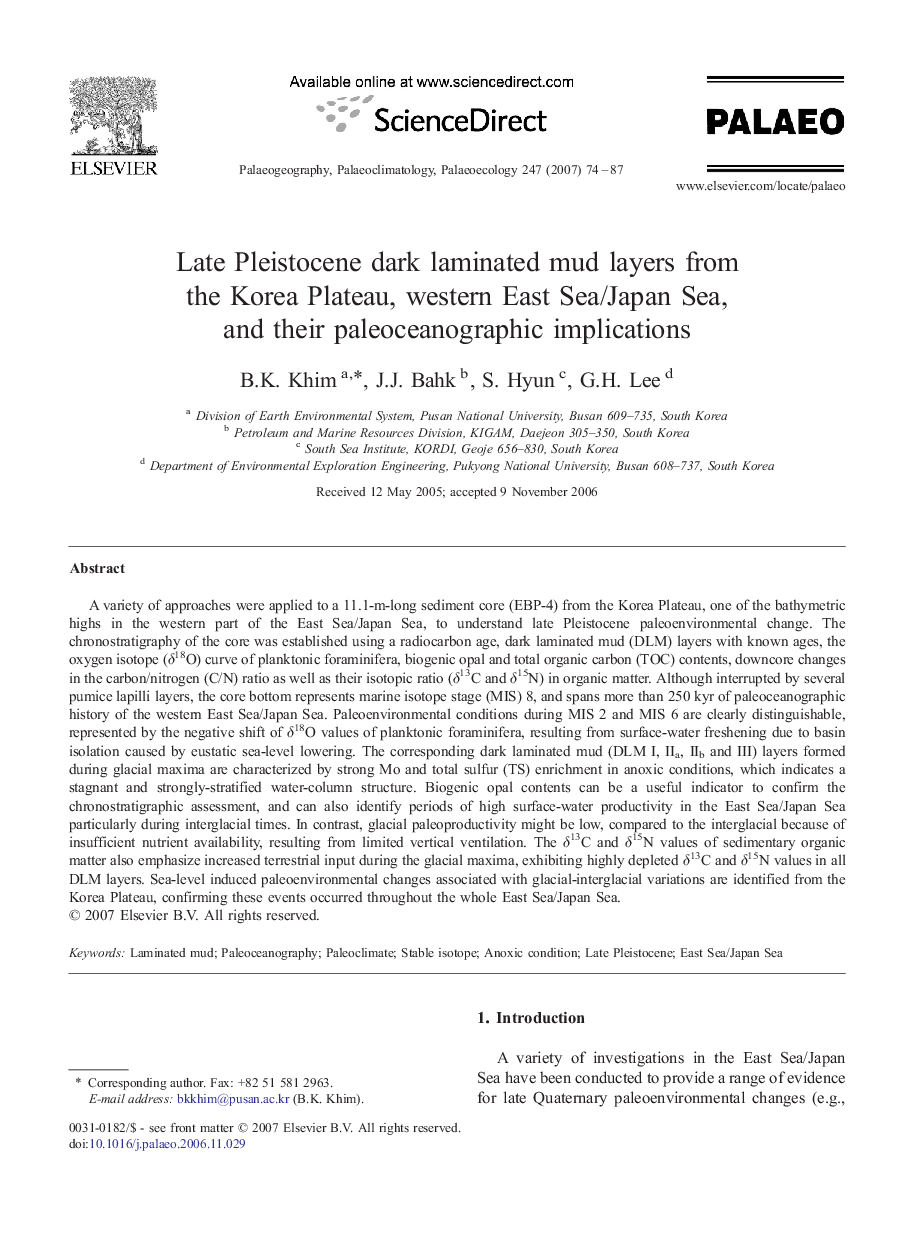| کد مقاله | کد نشریه | سال انتشار | مقاله انگلیسی | نسخه تمام متن |
|---|---|---|---|---|
| 4468975 | 1622355 | 2007 | 14 صفحه PDF | دانلود رایگان |

A variety of approaches were applied to a 11.1-m-long sediment core (EBP-4) from the Korea Plateau, one of the bathymetric highs in the western part of the East Sea/Japan Sea, to understand late Pleistocene paleoenvironmental change. The chronostratigraphy of the core was established using a radiocarbon age, dark laminated mud (DLM) layers with known ages, the oxygen isotope (δ18O) curve of planktonic foraminifera, biogenic opal and total organic carbon (TOC) contents, downcore changes in the carbon/nitrogen (C/N) ratio as well as their isotopic ratio (δ13C and δ15N) in organic matter. Although interrupted by several pumice lapilli layers, the core bottom represents marine isotope stage (MIS) 8, and spans more than 250 kyr of paleoceanographic history of the western East Sea/Japan Sea. Paleoenvironmental conditions during MIS 2 and MIS 6 are clearly distinguishable, represented by the negative shift of δ18O values of planktonic foraminifera, resulting from surface-water freshening due to basin isolation caused by eustatic sea-level lowering. The corresponding dark laminated mud (DLM I, IIa, IIb and III) layers formed during glacial maxima are characterized by strong Mo and total sulfur (TS) enrichment in anoxic conditions, which indicates a stagnant and strongly-stratified water-column structure. Biogenic opal contents can be a useful indicator to confirm the chronostratigraphic assessment, and can also identify periods of high surface-water productivity in the East Sea/Japan Sea particularly during interglacial times. In contrast, glacial paleoproductivity might be low, compared to the interglacial because of insufficient nutrient availability, resulting from limited vertical ventilation. The δ13C and δ15N values of sedimentary organic matter also emphasize increased terrestrial input during the glacial maxima, exhibiting highly depleted δ13C and δ15N values in all DLM layers. Sea-level induced paleoenvironmental changes associated with glacial-interglacial variations are identified from the Korea Plateau, confirming these events occurred throughout the whole East Sea/Japan Sea.
Journal: Palaeogeography, Palaeoclimatology, Palaeoecology - Volume 247, Issues 1–2, 20 April 2007, Pages 74–87